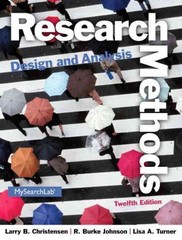Question
The government has decided that the free-market price of cheese is too low. a. Suppose the government imposes a binding price floor in the cheese
The government has decided that the free-market price of cheese is too low.
a. Suppose the government imposes a binding price floor in the cheese market. Draw a supply-and-demand diagram to show the effect of this policy on the price of cheese and the quantity of cheese sold. Is there a shortage or surplus of cheese?
b. Producers of cheese complain that the price floor has reduced their total revenue. Is this possible? Explain.
c. In response to cheese producers' complaints, the government agrees to purchase all the surplus cheese at the price floor. Compared to the basic price floor, who benefits from this new policy? Who loses?
A recent study found that the demand-and-supply schedules for Frisbees are as follows:
| Price per Frisbee | Quantity Demanded | Quantity Supplied |
|---|---|---|
| $11 | 1 million Frisbees | 15 million Frisbees |
| 10 | 2 | 12 |
| 9 | 4 | 9 |
| 8 | 6 | 6 |
| 7 | 8 | 3 |
| 6 | 10 | 1 |
a. What are the equilibrium price and quantity of Frisbees?
b. Frisbee manufacturers persuade the government that Frisbee production improves scientists' understanding of aerodynamics and is thus important for national security. A concerned Congress votes to impose a price floor $2 above the equilibrium price. What is the new market price? How many Frisbees are sold?
c. Irate college students march on Washington and demand a reduction in the price of Frisbees. An even more concerned Congress votes to repeal the price floor and impose a price $1 ceiling below the former price floor. What is the new market price? How many Frisbees are sold?
At Fenway Park, home of the Boston Red Sox, seating is limited to about 38,000. Hence, the number of tickets issued is fixed at that figure. Seeing a golden opportunity to raise revenue, the City of Boston levies a per ticket tax of $5 to be paid by the ticket buyer. Boston sports fans, a famously civic-minded lot, dutifully send in the $5 per ticket. Draw a well-labeled graph showing the impact of the tax. On whom does the tax burden fallthe team's owners, the fans, or both? Why?
Greater consumption of alcohol leads to more motor vehicle accidents and, thus, imposes costs on people who do not drink and drive.
a. Illustrate the market for alcohol, labeling the demand curve, the social-value curve, the supply curve, the social-cost curve, the market equilibrium level of output, and the efficient level of output.
b. On your graph, shade the area corresponding to the deadweight loss of the market equilibrium. (Hint: The deadweight loss occurs because some units of alcohol are consumed for which the social cost exceeds the social value.) Explain.
Bruno loves playing rock 'n' roll music at high volume. Placido loves opera and hates rock 'n' roll. Unfortunately, they are next-door neighbors in an apartment building with paper-thin walls.
a. What is the externality here?
b. What command-and-control policy might the landlord impose? Could such a policy lead to an inefficient outcome?
c. Suppose the landlord lets the tenants do whatever they want. According to the Coase theorem, how might Bruno and Placido reach an efficient outcome on their own? What might prevent them from reaching an efficient outcome?
Step by Step Solution
There are 3 Steps involved in it
Step: 1

Get Instant Access to Expert-Tailored Solutions
See step-by-step solutions with expert insights and AI powered tools for academic success
Step: 2

Step: 3

Ace Your Homework with AI
Get the answers you need in no time with our AI-driven, step-by-step assistance
Get Started


